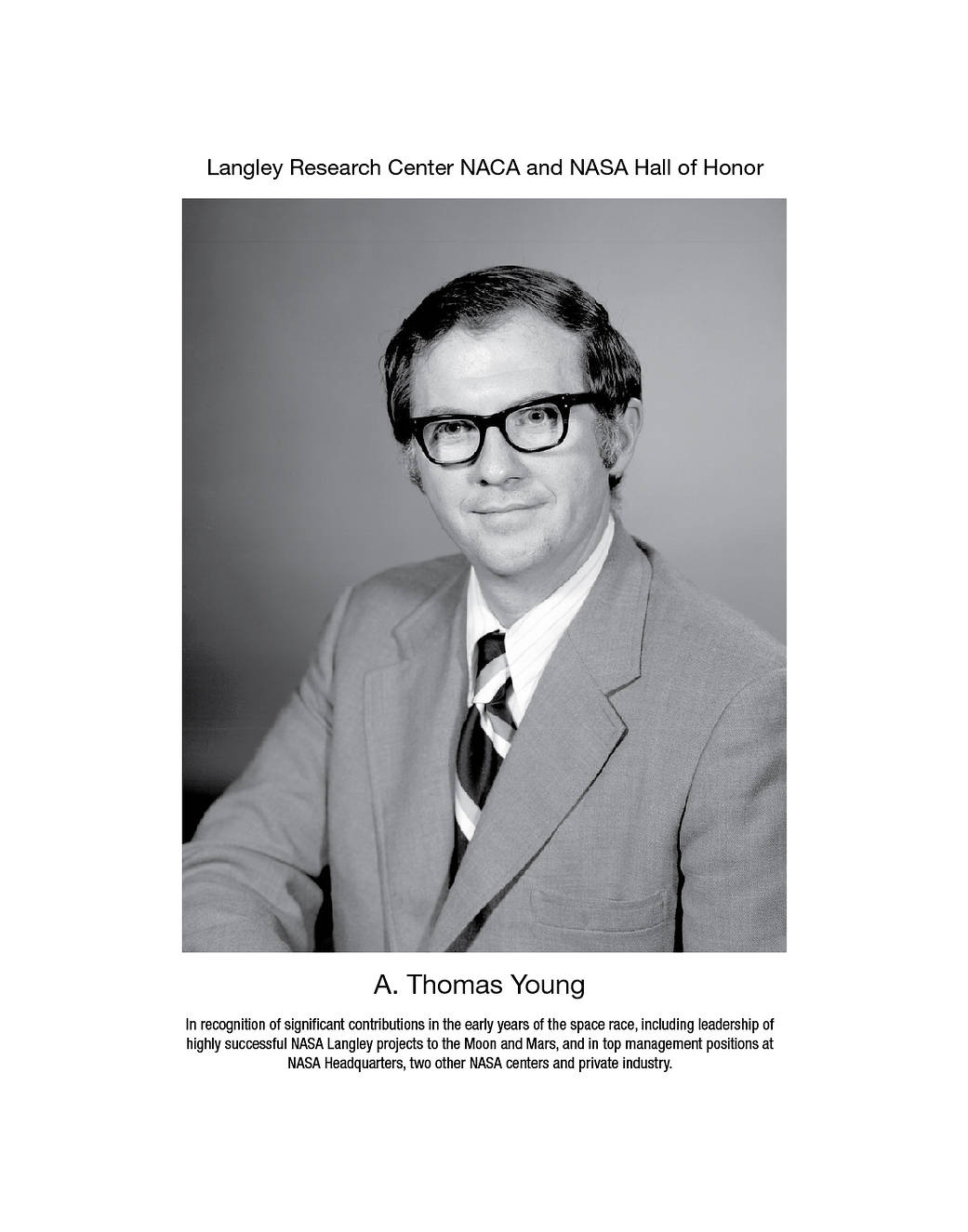
A. Thomas Young
A. Thomas “Tom” Young (1938-) started as an engineer working on sounding rockets in the early years of the space race, then went on lead highly successful Langley projects to the Moon and Mars, before moving on to management positions at NASA Headquarters, two other NASA centers, and private industry.
Young, born on Virginia’s Eastern Shore in Wachapreague, graduated from the University of Virginia in 1961 with a bachelor’s degree in aeronautical and mechanical engineering. He later went on to earn a master’s degree in 1972 from the Massachusetts Institute of Technology, where he attended as a Sloan Fellow during his time at NASA Langley.
Young started at Langley in 1961 developing attitude control systems and trajectory design for sounding rockets and space vehicles. He moved on to the Lunar Orbiter Project Office where he led the mission study group. The group’s mission risk assessment resulted in a “distributed photographic mission” that provided images of a large part of the Moon’s surface for potential Apollo landing sites, instead of just a select few. Five successful lunar orbiter missions launched in 1966 -1967 and photographed 99 percent of the lunar surface. Those images were used to establish safe landing zones for the six Apollo Moon landings.
Young’s out-of-this-world career continued when he was assigned to the Mars Viking program, first as science integration manager and eventually mission director. His roles required him to work with teams across the country at NASA and the Jet Propulsion Laboratory as well as contractors. The Viking project, with its two landers and orbiters that successfully arrived at the Red Planet, developed many of the key technologies and provided the cornerstone of today’s Mars exploration program.
With his establishment of the Mission and Science Working Group, Young helped bring NASA Langley engineering design capabilities to the planetary science community. The working group, which spanned the length of the Viking project from 1968 to 1976, allowed scientists to participate in spacecraft and mission design, while providing a path for NASA and industry engineers to be part of science planning.
After Langley, Young became director of the Planetary Program at NASA Headquarters in 1976 and was appointed deputy director of NASA’s Ames Research Center in Silicon Valley, California, in 1978. Later, he served as the director of NASA’s Goddard Space Flight Center in Greenbelt, Maryland, from 1979 to 1982. He left NASA in 1982 and joined Martin Marietta as vice president of aerospace research and engineering and became the president and chief operating officer of Martin Marietta from 1990 to 1995. When Martin Marietta merged with Lockheed, he was appointed executive vice president of the Lockheed Martin Corporation.
Young has received numerous honors and awards for his contribution to the nation’s space program, including NASA’s highest award, the Distinguished Service Medal, for his role in the Viking project. He also received the Outstanding Leadership Medal for his contributions to the Voyager program, the Distinguished Executive Presidential Rank Award, and is a recipient of the Space Foundation’s highest honor – the General James E. Hill Lifetime Space Achievement Award – in recognition of outstanding contributions to the betterment of humankind through the exploration, development, and use of space. Young is an honorary fellow of the American Institute of Aeronautics and Astronautics.


























